How the University of California Berkeley Transformed its Campus to Support Military Activities 1917-1918
5th Mar 2022
Cal Berkeley is famously known for its anti-war protests in the 1960s opposing the Vietnam War. Thus, we found it interesting to stumble across an old book titled University of California : A Glimpse of Its Military Activities 1917-1918, which outlines all the efforts the school took to mobilize for the First World War. The book is full of vintage black and white images of students who have joined various branches of the military in training.
The introduction of the book sets the backdrop, "On February 13, 1917, ten days after the severance of diplomatic relations with Germany, President Wheeler presented to the Regents a request that he be empowered, in the event of a declaration of war, to place the University of California, with all its equipment and resources, unreservedly at the disposal of the government. Long before war was actually declared, however, the University had been quietly preparing within its various departments to perform the work that was to be required of it, and the noble phrases of President Wilson's message to Congress were still ringing in our ears when the concrete development of a programme of war service was begun.
During the nineteen months of America's participation in the war, the University gave itself in ever-increasing measure to the supreme task, and the signing of the armistice found it transformed into a huge military machine, its drill grounds thronged with marching battalions, its campus covered in barracks and tents, its walks resounding to the tread of sentries, its classrooms filled with the uniforms of army and navy, its laboratories given over to the investigation of the problems of war, and its members one and all, men and women, faculty and students, undergraduates and alumni, devoting themselves to their country's cause--3500 of them in active service with the colors."
Cal Berkeley sprung into action and took the following activities. The declaration of war came on April 6, 1917.
April 10, 1917 - A Military Bureau opens on campus
May 15, 1917 - The First Officers' Training Camp at the Presidio in San Francisco is opened. 250 U.C. students sign up
May 21, 1917 - The School of Military Aeronautics is established and its first groups of students joins
June 18, 1917 - A special course of seven weeks in military science and tactics opened
August 27, 1917 - The Second Officers' Training Camp opens
October 15, 1917 - The First and Second Ordnance schools are opened and 51 students join
January 5, 1918 - The Third Officers' Training Camp opens and the Universities quota is entirely filled
January 7, 1918 - The first naval preparatory course at the University Extension Division was begun in San Francisco. At Berkeley a week later similar courses were begun with an enrollment of 100 students.
March 11, 1918 - The Fourth Ordnance School is opened with an attendance of fifty students
March 15, 1918 - The University Extension Division offered its second series of naval courses, and on the same day the Fourth Officers' Training Camp opened.
March 23, 1918 - 39 students enter the competitive examination for the Navy at Norfolk, Virginia
May 20, 1918 - The third series of Extension courses in naval subjects begin
July 1, 1918 - The inauguration of the School of Vocational Training
August 3, 1918 - Preliminary plans for the establishment of the Students' Army Training Corps (S.A.T.C.) were received from Washington.
September 8, 1918 - The University signs a contract with the government and in three days a site for barracks were cleared, actual construction began two days later and by October 1 three of the eight barracks were completed.
October 1, 1918 - 1,500 members of the Students' Army Training Corps and Naval Unit formally take the oath
November 11, 1918 - The armistice is signed and the war ends
December 11, 1918 - The last retreat was held, and the process of demobilization was completed by December 21.
It's quite amazing to think that Cal Berkeley at one time had army barracks on its grounds and its campus was dotted with tents to quarantine students in training who caught the Spanish influenza. In addition to the barracks on campus, several large buildings adjacent to the campus were used.
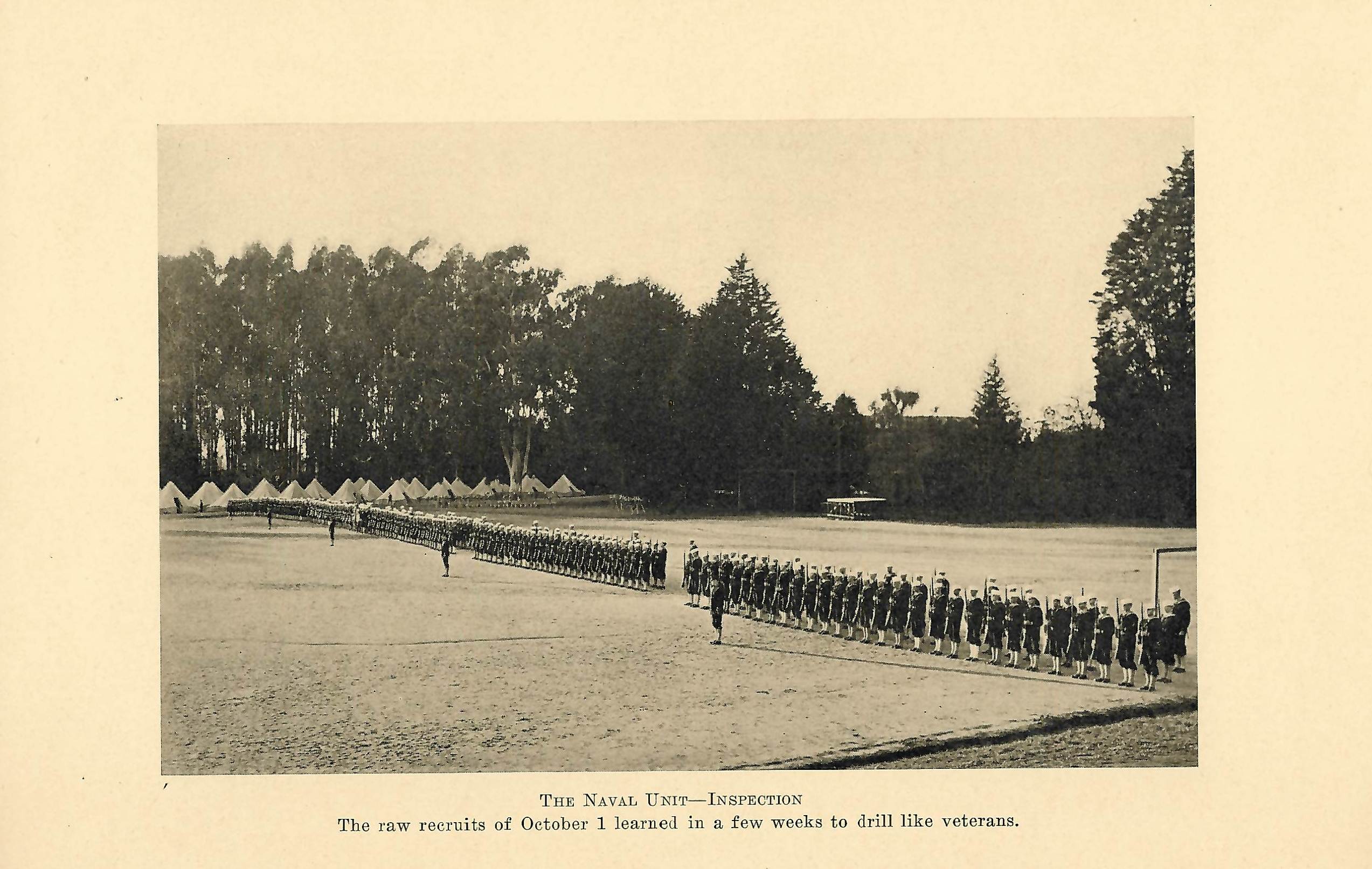
Recruits at the The Naval Unit, U.C. Berkeley, doing drills, 1917
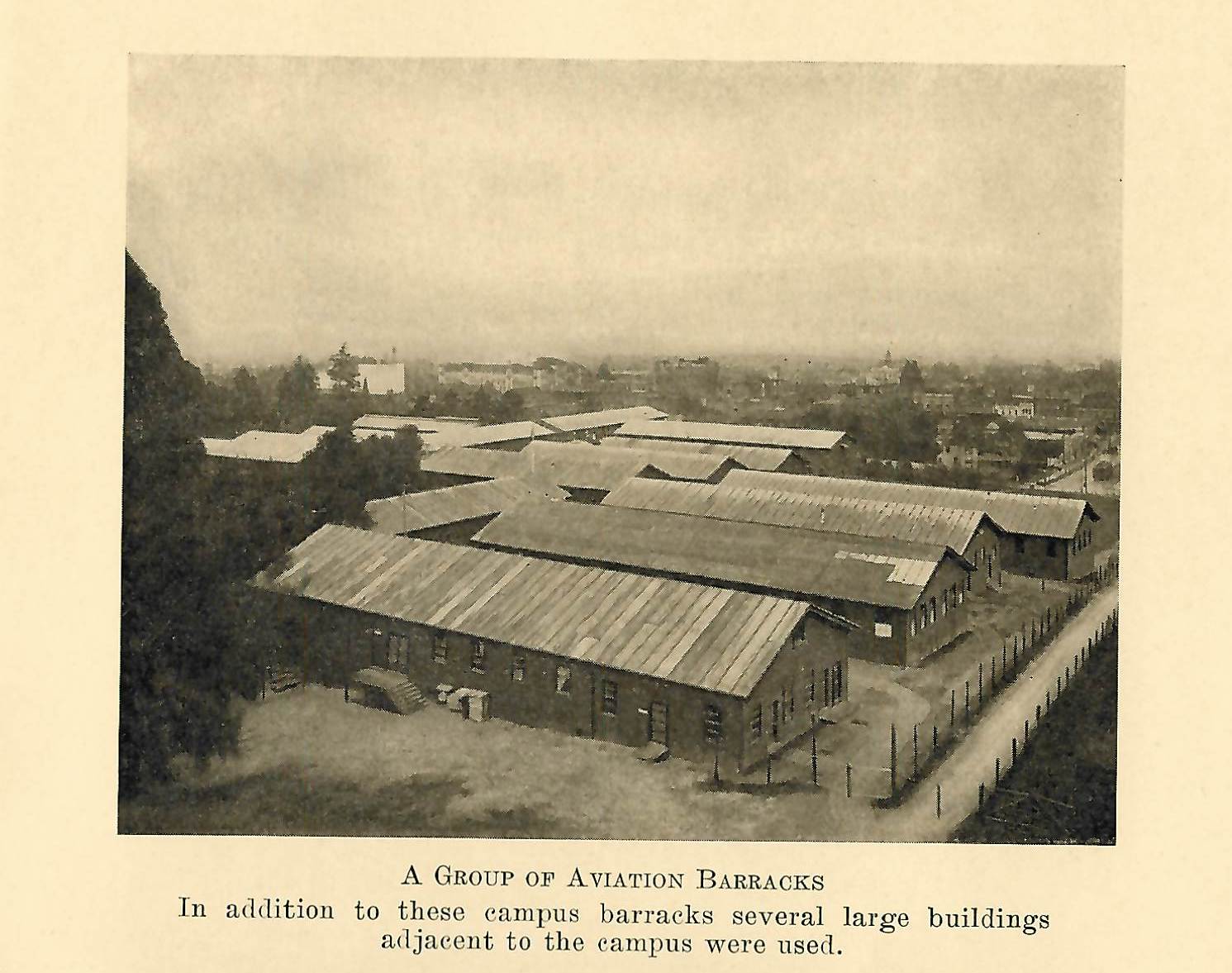
The Aviation Barracks at Cal Berkeley, which were built very quickly to support World War I efforts
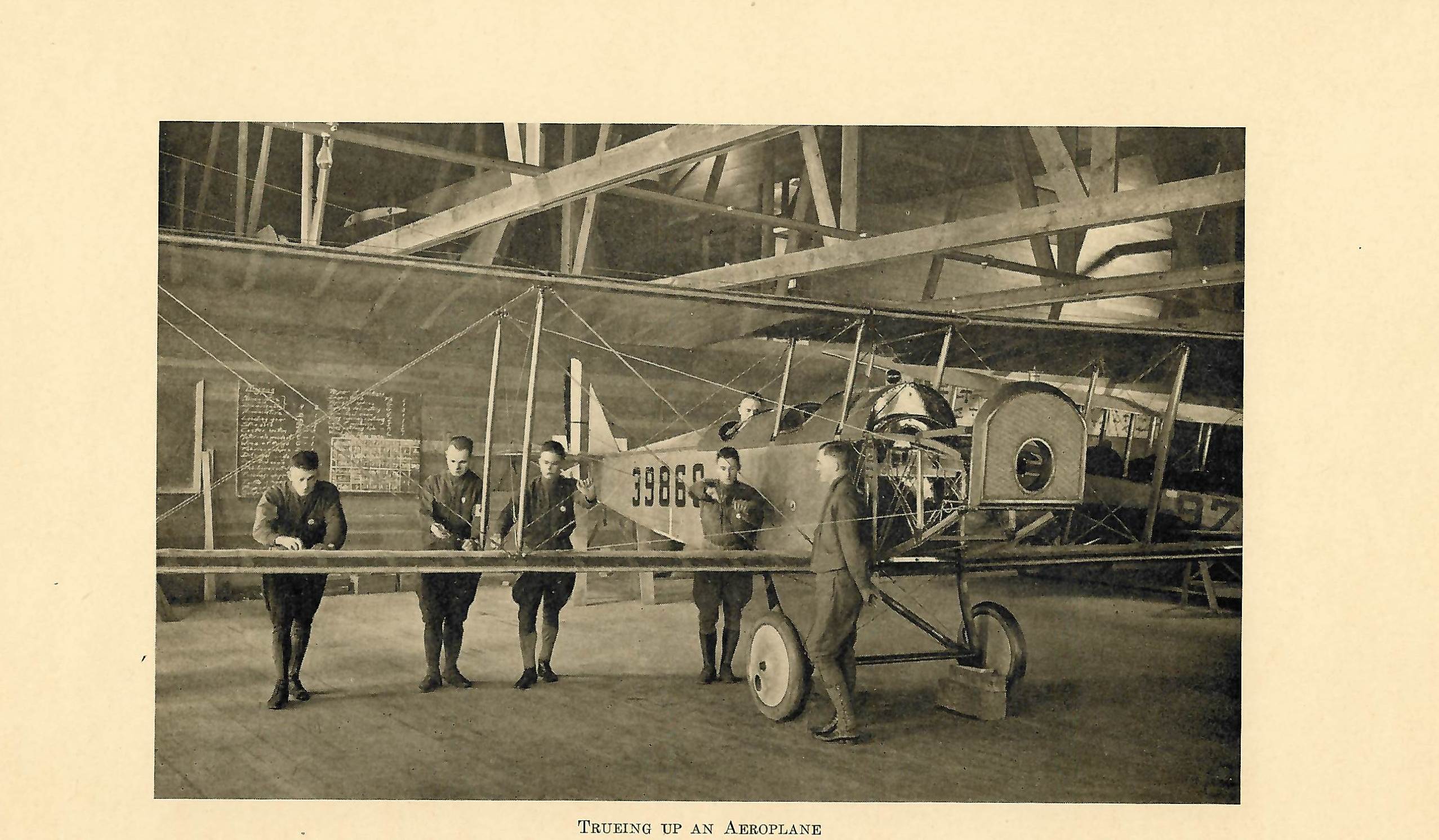
In this classic image, Cal Berkeley students are working on a bi-plane.
In the spring of 1917, the War Department, through the Air Division of the Signal Corps, selected several technical universities to be Ground Schools for preparatory instruction in military aeronautics.U.C. Berkeley established a School of Military Aeronautics in 1917, one of only eight in the country. Other schools who also established similar schools were Ohio State, Cornell, the University of Illinois, the University of Texas, Princeton, Georgia Tech and MIT. All of these Military Aeronautics programs were operated directly under the control of the Chief Signal Officer of the Army in Washington D.C. The schools were modeled after similar schools that the British had established. Students went through eight weeks of technical training. After completing this "ground training," students then engaged in six weeks in the flying school where they spent 30 hours in the air. After completing their flight time there was an additional four weeks of training in the military use of the aircraft including reconnaissance and observation training. Students graduating from the program and passing the Reserve Military Aviator test they became Second Lieutenants in the Army.
Part of the training included a "Gunnery," section where the students learned about machine guns, bombs, and shelling, fighting in the air and trap shooting. They practiced shooing the machine guns on the planes on a 25-yard range. They also learned how to signal from the aircraft with a buzzer, lamp, and a miniature ground shutter. Those interested in learning more about this school can visit the Smithsonian's website where they have the full 1,300 page curriculum for the school on-line.
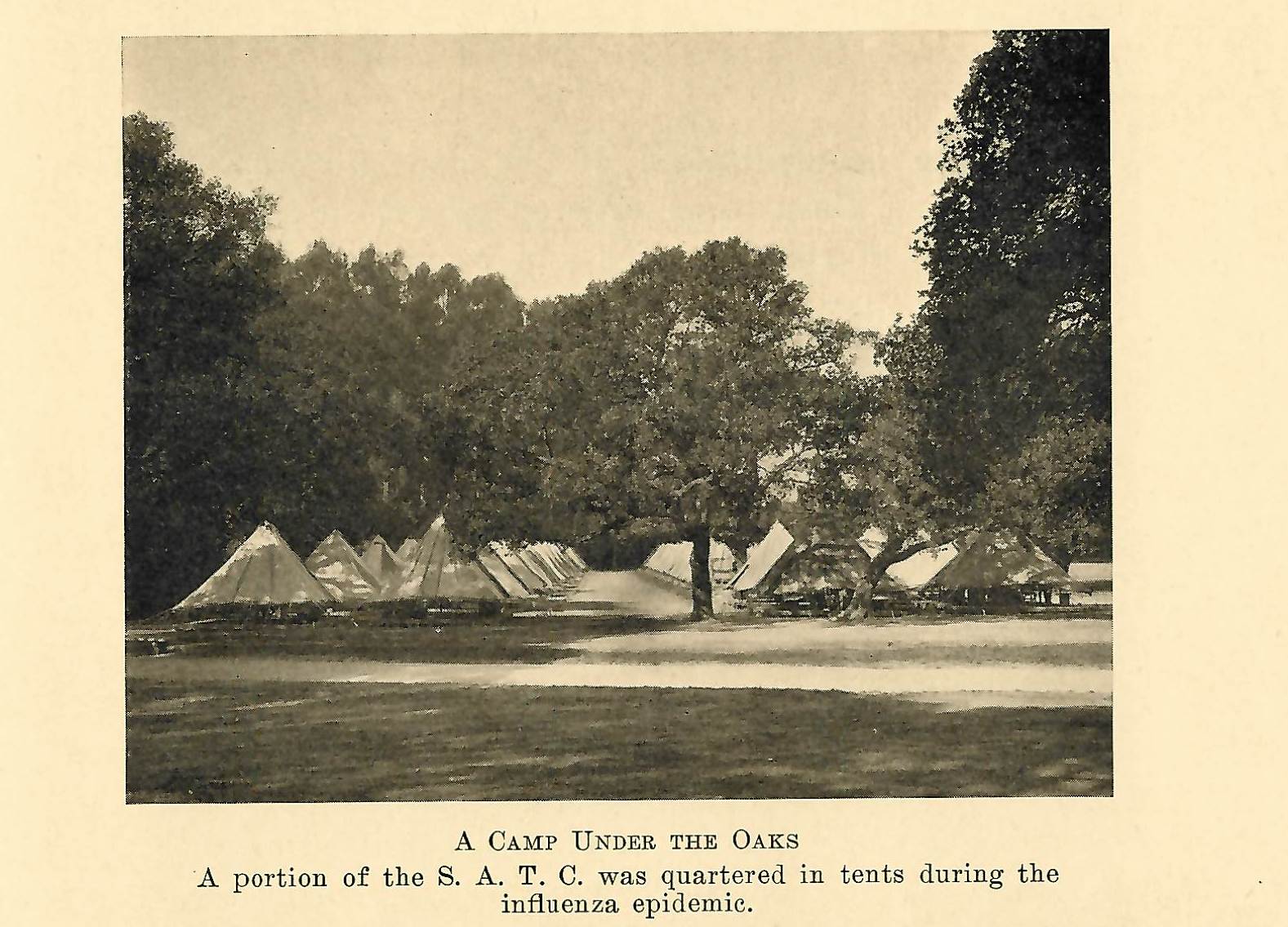
The Berkeley Oak Trees during the First World War and the quarantine tents
Confronting both a World War and the Spanish Flu pandemic was quite a challenge. This rare picture captures the tents used to quarter the Student Army Training Corps (abbreviated as S.A.T.C.) at Berkeley.
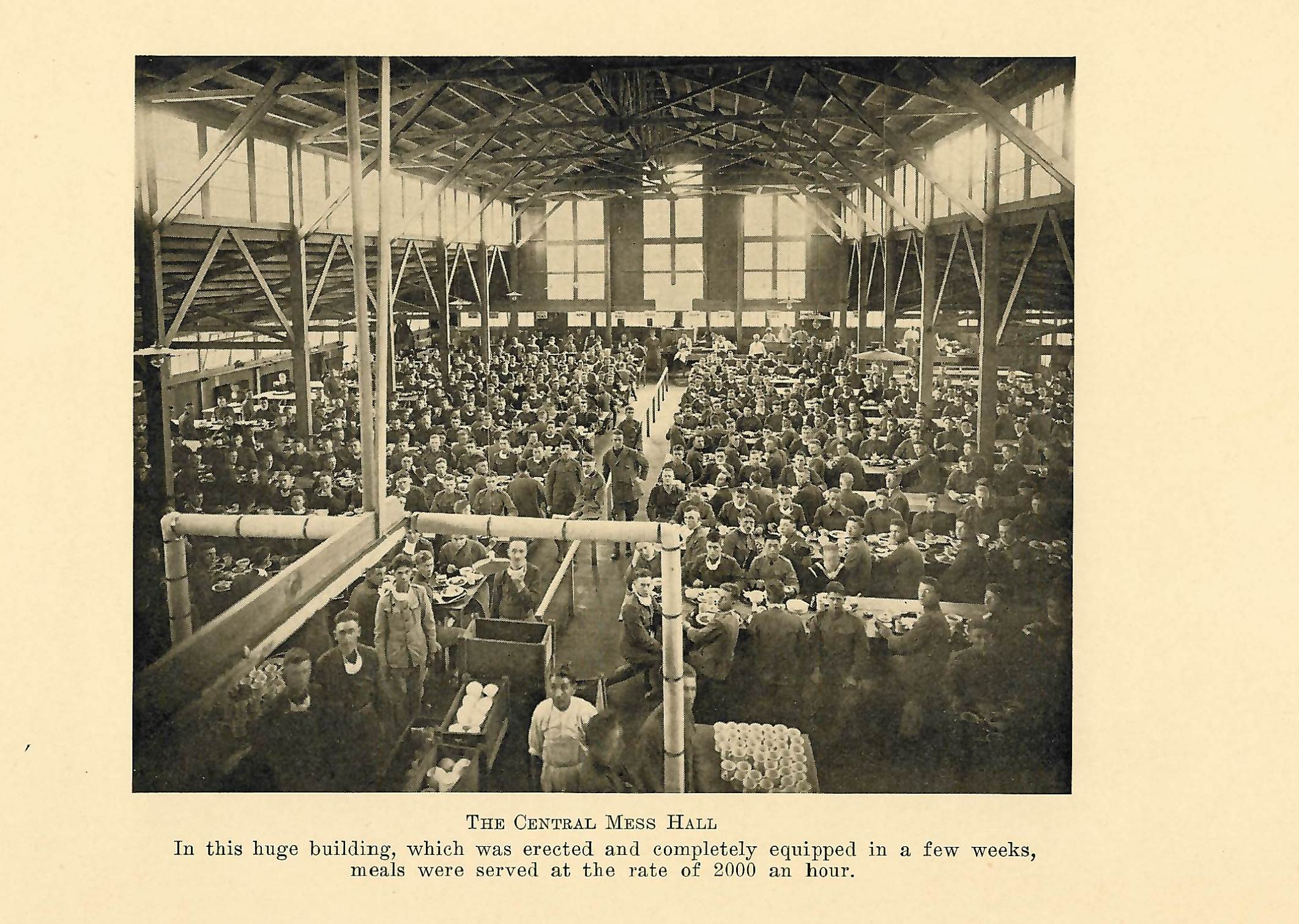
The hastily built wooden Mess Hall on campus was well used
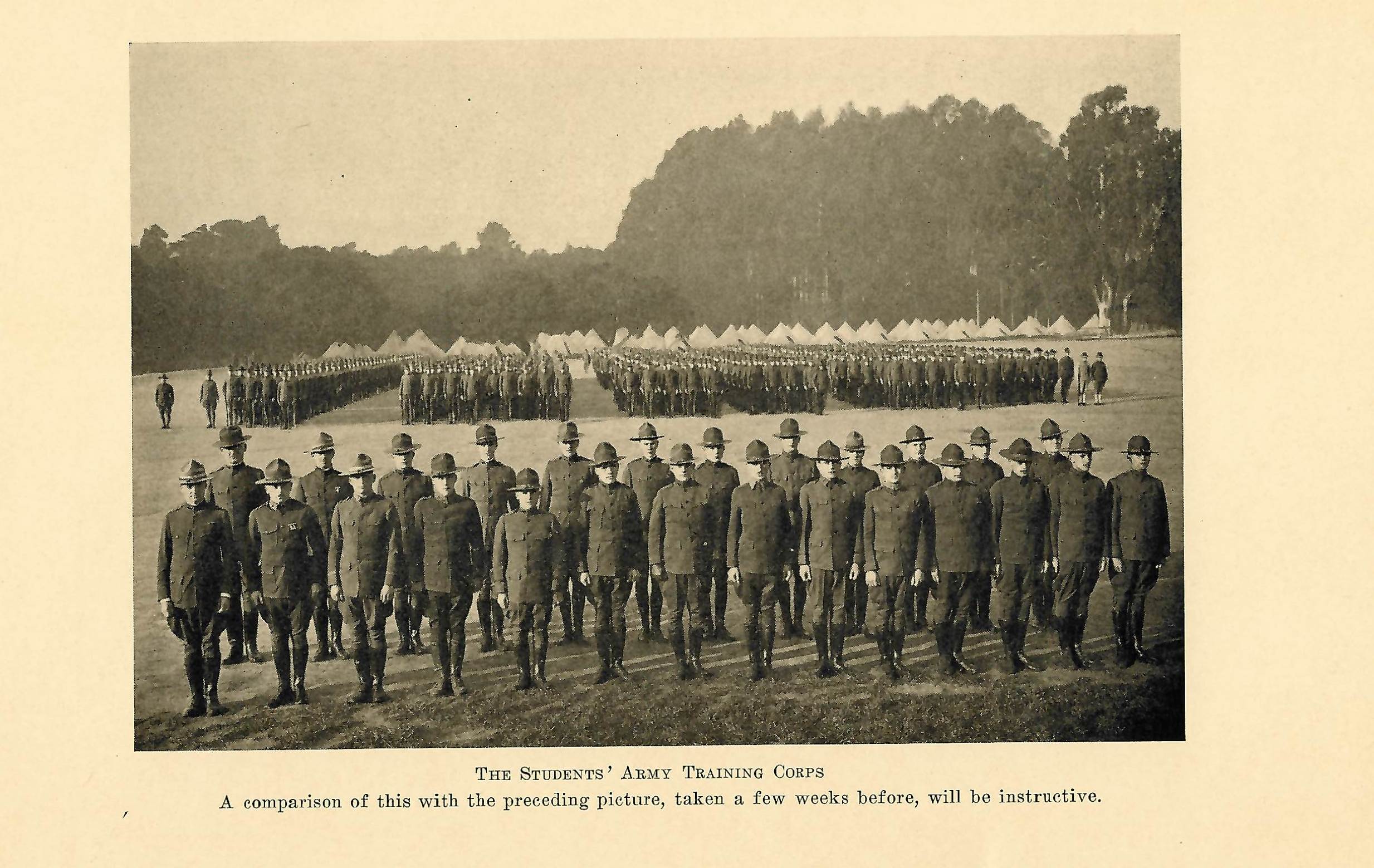
The Students' Army Training Corps in crisp formation at U.C. Berkeley
It would be decades before the anti-war protests at Berkeley in the 1960s. This picture is as far away from that reality as you can imagine. The campus full of soldiers, camps, and barracks.